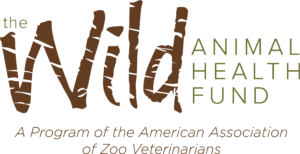The Impact of Floridian Development on the White Ibis

The white ibis is one of the most abundant wading birds in Florida. If you’re from the South, there’s a chance you’ve seen a flock of white ibises at a local park or even in your backyard. They’re charming with their unique red beaks and white body. However, white ibises have increasingly relied on humans for food. Even worse, they have become habituated to human presence. This has proved to be a major hindrance for the species as urbanization expands. As natural habitats for wildlife are destroyed, the health of the white ibis in Florida has been called into question.
What’s the solution for white ibises in Florida?
Wildlife veterinarians worldwide are working to lessen the impact of urbanization on this species. A study funded by the Wild Animal Health Fund sought to find answers for the white ibis population in the Florida Everglades. A team of researchers and veterinarians were able to monitor these birds. by safely assessing individuals for stress and avian pathogens and tagging birds for future tracking of their locations.
With these methods, the research team could better understand how urban habitats affect the infectious disease process and determine the future of the white ibis in Florida. They concluded further research and legislature were needed to save the white ibis–a species integral to Florida’s ecosystems.
How did their findings make an impact?
The federal government found this issue so critical that they supplied addition funding to gather a larger sampling and perform testing to validate the extensive effects on the birds from urbanization. Local cities are taking action to help promote healthy ways for people and wildlife to live in shared habitats. One method includes reducing the access to food in urban areas. Not feeding the birds is the easiest way to help these animals. Adjusting city planning to improve the health of all animals has also become a priority.
The success of the white ibis study in Florida highlights just how important our work is. At the time of this study, the Wild Animal Health Fund was only in its second year of operation. Yet, the findings were used in large-scale projects and legislature to further help wildlife and educate communities. Wildlife conservation starts small, as most things do. Let animal health be a part of the big picture.
